Search engines have evolved from just showing a list of results to providing instant answers, thanks to AI, voice technologies, and smarter algorithms.
If you search “What is the best time to visit Japan?” for example, you might see an AI overview section powered by an AI answer engine.
This section pulls information from top-ranked content and adjusts it to match exactly what you’re looking for. The same idea applies to tools like ChatGPT or Siri, which summarize and customize answers based on your question.
This is where Answer Engine Optimization (AEO) comes in.
AEO ensures your content is clear, relevant, and well-structured so it’s more likely to be chosen for these AI-generated answers.
In this article, we will discuss everything you need to know about AEO and how to solve AEO for your content effectively.
What Is Answer Engine Optimization (AEO)?
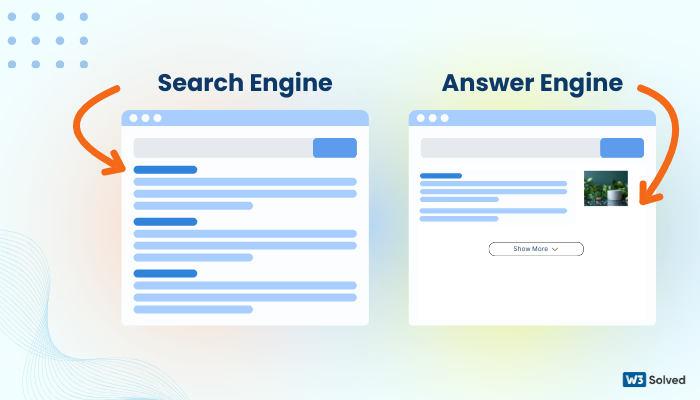
Answer Engine Optimization (AEO) involves structuring content to answer user queries directly, enabling search engines and AI-driven tools to present information effectively in formats.
When you ask a question to AI chatbots, overview, or voice assistants, they work like Answer Engines. Instead of showing you a list of links like traditional search engines, they provide direct, specific answers to your question.
In simple words, an Answer Engine is a system that focuses on solving your question directly rather than making you search through multiple sources for the answer.
Where Does AEO Content Appear in Search Results?
When people search for answers online, Google and other search engines try to give them the most helpful response right away.
That’s where AEO (Answer Engine Optimization) content comes in. It’s designed to answer questions clearly and directly—and when done well, it can show up in special places on the results page.
Here’s where your AEO content might appear:
- Featured snippets
- People Also Ask (PAA)
- Knowledge Panels
- Voice Search Responses
- AI Overviews (Search Generative Experience)
1. Featured Snippets:
What It Is:
Featured Snippets are the boxed answers that appear at the top of some Google search results. These are highly visible and are considered a position zero ranking.
How to Get It:
- Identify common queries in your niche and provide direct, concise answers.
- Structure your content for easy extraction like use lists, bullet points, and short paragraphs.
- Use clear headings to ensure your answers are clearly marked with H2 or H3 headings that match the search query.
- Featured snippets can appear as paragraphs, lists, or tables. Choose the format that best suits the question.
Is It Achievable?
Yes, but competition is fierce. It’s achievable if your content is highly relevant, concise, and structured in a way that Google can easily pull from it. It often requires frequent optimization and tracking to maintain the position.
2. People Also Ask (PAA):
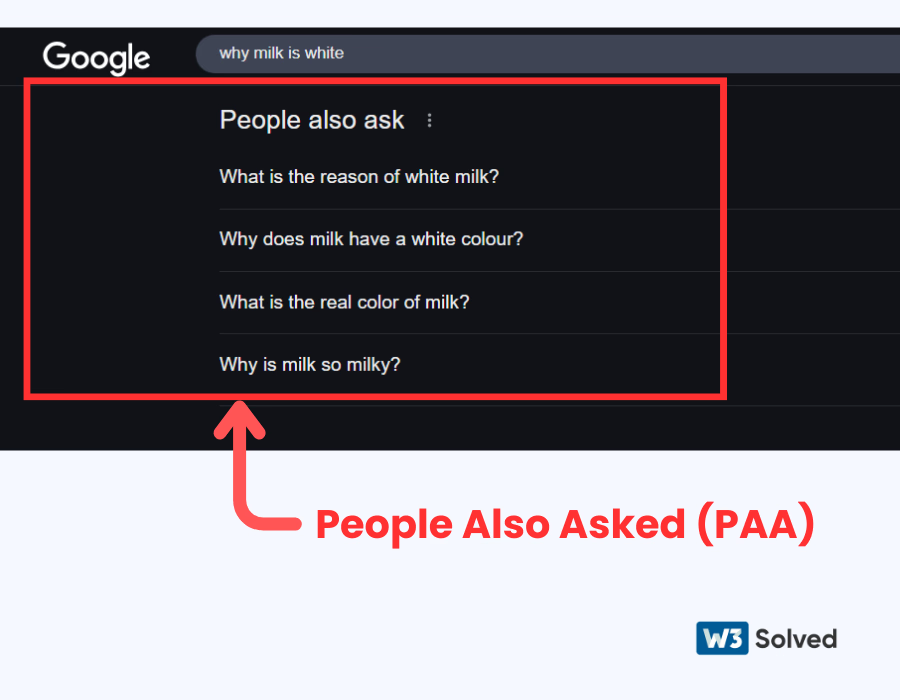
What It Is:
PAA boxes show up as a list of related questions in search results. These sections are a great way to capture traffic from follow-up queries.
How to Get It:
- Use question-based keywords to incorporate common questions and answers into your content, particularly in FAQ-style formats.
- Long-tail keywords often trigger PAA results.
- Make sure your answers are highly relevant to the queries in the PAA section.
Is It Achievable?
Yes, PAA results are easier to target compared to featured snippets. By optimizing content for long-tail questions and providing concise answers, your chances of being featured are good.
3. Knowledge Panels:
What It Is:
Knowledge Panels appear on the right side of the search results (on desktop) and provide a summary of information about entities, like businesses, people, places, or things.
How to Get It:
- Create and optimize a Google My Business listing (for local businesses).
- Ensure your brand has a strong digital presence like high-authority backlinks, mentions, and relevant content about your business.
- Implement schema markup to provide clear details about your business.
- A verified Wikipedia page can help trigger a knowledge panel for people or entities.
Is It Achievable?
It’s achievable for well-established brands or notable figures, but more challenging for smaller businesses. Building credibility and establishing an authoritative digital presence is key.
4. Voice Search Responses:
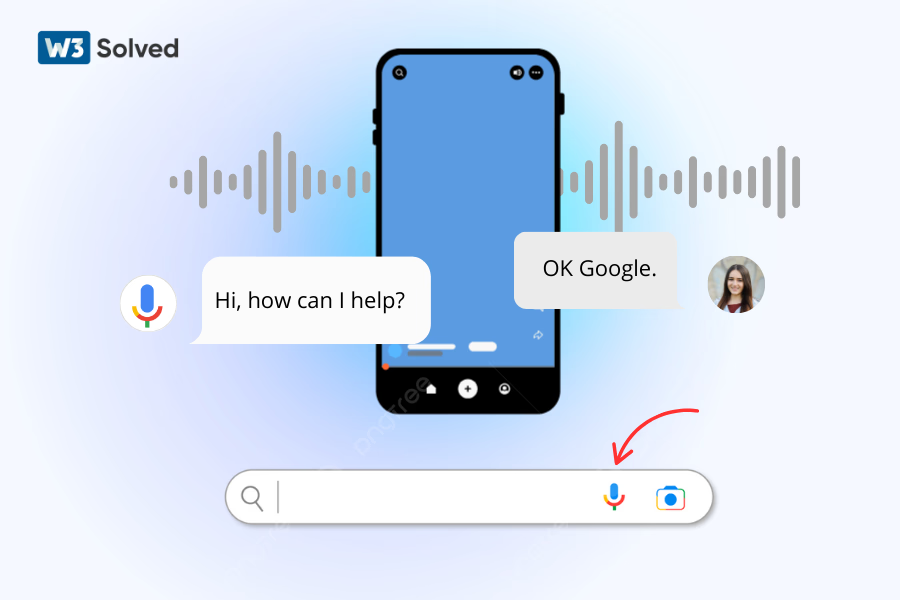
What It Is:
Voice search answers appear when users ask questions through voice assistants like Google Assistant, Siri, or Alexa.
How to Get It:
- Answer questions in a conversational tone that mirrors how people speak.
- Voice assistants often pull answers directly from featured snippets, so optimizing for them increases your chances.
- Many voice searches are local. Ensure your content is localized (e.g., city names, local landmarks).
Is It Achievable?
Yes, especially for businesses that target local intent. It requires clear, concise content optimized for conversational speech patterns and direct answers.
5. AI Overviews (Search Generative Experience):

What It Is:
Google’s Search Generative Experience (SGE) uses AI to generate summaries and responses directly in search results.
How to Get It:
- Provide clear, structured, and authoritative content as AI uses structured, trustworthy content for generating summaries.
- Longer, comprehensive content is more likely to be referenced by AI.
- As AI-generated content evolves, regularly update your content to remain relevant and authoritative.
Is It Achievable?
Yes, though it is still emerging and more unpredictable. The key is creating highly valuable, authoritative content that is well-structured and easily interpreted by AI.
AEO vs SEO: Key Differences in Optimization
If you’re trying to improve your visibility in search results, it’s important to understand how AEO differs from traditional SEO.
While both aim to increase your online presence, SEO focuses on ranking web pages to attract clicks, whereas AEO is about providing clear, direct answers within search results themselves.
This means that AEO often requires a different approach to content — one that prioritizes question-based queries, concise formats, and structured information that can be easily extracted and displayed by search engines.

Goal Orientation
- Traditional SEO focuses on improving rankings and click-through rates by targeting specific keywords, optimizing meta tags, and building backlinks. Its goal is to drive users to your website via the top search result positions.
- AEO focuses on providing direct answers to user queries. It aims to help your content appear in answer boxes, featured snippets, AI-generated summaries, and voice search results — even if the user doesn’t click through to your website.
User Intent and Content Structure
- SEO often targets short-tail or commercial-intent keywords like “buy running shoes” or “best SEO tools,” and structures content for traditional browsing (intro, body, CTA).
- AEO optimizes for question-based or conversational queries, such as “how does SEO work?” or “what is the best time to post on Instagram?” The content is structured with clear answers, bullet points, and FAQs to meet the “answer intent.”
Search Experience Coverage
- SEO targets visibility in standard blue-link listings on SERPs.
- AEO focuses on getting content into enhanced search features including, Featured Snippets (Position Zero) People Also Ask (PAA) etc.
Technical Approach
- SEO uses tactics like keyword placement, internal linking, backlink acquisition, and page speed optimization.
- AEO complements SEO but leans more on:
- Implementing structured data (like FAQ schema)
- Crafting concise, factual content
- Addressing multiple user questions in a single page
- Using natural language that matches voice and AI queries
Click vs No-Click Value
- In SEO, success is often measured by organic traffic and conversions.
- In AEO, success includes visibility without clicks, such as being cited in AI-generated results or read aloud by voice assistants — valuable for brand authority, top-of-funnel awareness, and trust building.
SEO remains the foundation for making your content discoverable across the web. However, as search engines increasingly surface direct answers instead of just links, AEO plays a growing role in ensuring your content is selected, not just listed.
When used together, SEO and AEO help your content appear in both traditional rankings and modern answer-based formats — giving you broader visibility and more control over how your information is presented
How Does the Answer Engine Work?
If you haven’t already guessed, AEO is a part of SEO (Search Engine Optimization). AEO focuses on optimizing content to appear as direct answers or featured snippets (like “Position Zero”) on search engines.
Like SEO, you need to perform keyword research to identify the queries to include in your content.
Here is the process of how the search engine provides the answer while you search for any queries.
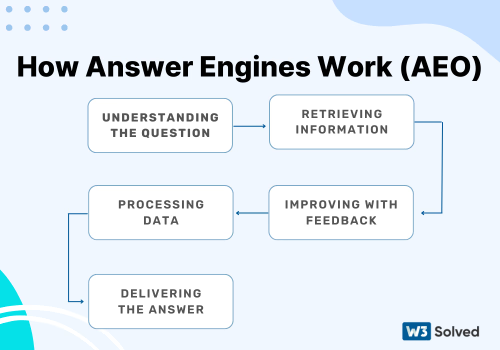
- Understanding the Question: It all starts with figuring out exactly what the user is asking. This step involves breaking down the query to understand the intent behind the words.
- Retrieving Information: Once the question is clear, the system pulls the most relevant and accurate information available from various sources.
- Processing Data: The retrieved data is refined and organized into a format that’s easy for the user to understand.
- Delivering the Answer: The final answer is presented in a way that directly addresses the user’s question, ensuring it’s both helpful and concise.
- Improving with Feedback: Over time, feedback from users helps the system learn and improve, ensuring better answers and experiences in the future.
How to Optimize Content for AEO
Now that you understand how answer engines work and where AEO content appears, the next step is learning how to actually optimize your content to qualify for these placements.
AEO isn’t about stuffing in keywords — it’s about structuring your content so search engines can easily recognize it as a trustworthy, concise, and relevant answer to a specific query.
Below are key strategies to help your content become the answer, not just another result:
1. Understand and Match User Intent
Answer engines are built to serve intent — not just keywords. Focus your content on solving a specific question or need. Tools like Google’s “People Also Ask,” forums, and search autosuggestions can help identify what your audience truly wants to know.
Tip:
Use natural, question-based phrasing like "How does..." or "What is..." to align with voice and AI queries.
2. Use Structured Data (Schema Markup)
Schema markup tells search engines exactly what your content means. You have to implement structured data like FAQ, Review, Product, Event, or Location for making your content standout-readable — a key requirement for featured snippets and voice search results.
Tip:
Use tools like Google’s Rich Results Test to verify your markup.
3. Craft Clear, Direct Answers
Write like you’re answering a question in a help article — short, clear, and to the point. Answer the core question within the first few lines, and use formatting like headings, bullets, and numbered steps to improve scanability.
Tip:
If it takes more than 3 sentences to explain something, consider breaking it into a separate subsection.
4. Target Long-Tail and Question-Based Keywords
Instead of optimizing for broad terms, go after long-tail keywords that reflect how people ask questions. Tools like AnswerThePublic, AlsoAsked, or Google Search Console can reveal high-intent question formats.
Tip:
Aim for specificity — e.g., “how to fix a slow-loading website” instead of just “website speed.”
5. Build Topical Authority
AEO favors trustworthy sources. One-off pages won’t cut it. Create clusters of related content to demonstrate depth. Internally link between pages that cover related subtopics to help both users and search engines navigate your expertise.
Tip:
Consider building a FAQ hub or a glossary-style section to target a wide range of answer-worthy queries.
Why AEO is Gaining Traction?
The rise of Answer Engine Optimization (AEO) reflects a larger shift in how users interact with search engines. Today’s users want fast, clear answers — not long lists of links.
Whether it’s AI summaries, voice responses, or featured snippets, search engines are prioritizing content that answers questions immediately and effectively.
This shift in behavior and technology is making AEO not just a trend, but a necessity.
Here’s why it’s gaining popularity:
1. Rise of Zero-Click Searches
A major reason AEO is on the rise is the explosive growth of zero-click searches. These are search results where users find their answer directly on the results page — without clicking on a single link.
According to SparkToro and Jumpshot, more than 50% of Google searches end without a click. This means users are consuming information from featured snippets, People Also Ask boxes, and other on-SERP features.
For businesses, this means traditional SEO efforts may no longer guarantee traffic. AEO helps brands stay visible in this new “clickless” environment by providing direct, structured answers that appear in these high-visibility areas.
2. Google’s Shift Toward Answer-Based Results
Google’s algorithm updates over the past few years — including BERT and MUM — have been designed to improve the search engine’s understanding of natural language and context. More recently, the introduction of Search Generative Experience (SGE) has taken this further, using AI to generate rich summaries right on the search results page.
According to Google, these AI-generated overviews aim to give users quick insights without needing to sift through multiple links. This places a greater emphasis on content that is concise, trustworthy, and well-structured — all of which are key components of AEO.
3. Voice Search Growth
The widespread use of voice assistants like Google Assistant, Siri, and Alexa has changed the way users search. People are now more likely to ask complete questions rather than typing in fragmented keywords. Voice search queries are conversational, and users expect a clear, immediate answer.
A study referenced by Voicebot.ai showed that voice searches account for more than 1 billion queries per month.
Since these devices typically respond with one answer — often pulled from featured snippets or structured data — AEO becomes essential for capturing that top result.
4. AI Overviews Are the New “Position Zero”
With the rollout of Google’s AI Overviews, brands are no longer just competing for the top organic spot — they’re competing to be cited within the AI-generated summaries themselves. These overviews often include information pulled from multiple sources, meaning proper structure, schema markup, and topical clarity increase your chances of being included.
Optimizing your content for AEO helps signal to Google that your page is a reliable source worth citing in these AI summaries, giving you a presence even when users don’t click through.
5. Users Expect Instant, Simplified Information
User behavior has evolved. Whether on desktop or mobile, people now prefer quick, skimmable answers rather than scrolling through long paragraphs. According to Think with Google, simplicity and speed are top priorities in the user journey.
AEO-friendly content — which uses headers, bullets, short paragraphs, and direct answers — is not only better for search engines, but also creates a smoother user experience. Meeting this expectation helps reduce bounce rates and builds trust faster.
6. It Offers a Competitive Edge in Niche Queries
Most businesses still focus only on ranking for high-volume, broad keywords. AEO allows you to target long-tail, question-based queries — the type of searches users ask when they’re ready to take action. These queries often have lower competition but higher intent.
According to Ahrefs, long-tail keywords account for over 70% of all search traffic. Optimizing for them through AEO gives you a chance to dominate niche spaces and build authority in specific topics.
Why is AEO Important for Your Business?
Answer Engine Optimization (AEO) has become essential for businesses, especially those partnered with an answer engine optimization agency, It helps boost visibility in voice search, AI tools, and featured snippets, making sure their content is easily found and directly answers user questions.
Adopting AEO (Answer Engine Optimization) helps businesses improve visibility, engage users effectively, and build authority, ultimately enhancing their digital presence.
1. Higher Click-Through Rates (CTR)
Content featured in rich snippets or direct answers typically experiences significantly higher CTR up to 8 times more than standard search results. When content directly answers a user’s query, it stands out and attracts more clicks.
A query like “What is the best digital marketing strategy?” results in a featured snippet with a direct answer. This visibility leads to more clicks compared to a traditional link, as users prefer the immediate, clear response.
2. Improved Authority
Consistently providing accurate, well-structured answers helps your brand gain trust. Search engines recognize this reliability, boosting your visibility. Over time, users begin to trust your content more, leading to increased engagement and long-term loyalty.
A blog that answers questions like “How does SEO work?” with data-backed, clear information is more likely to rank higher and build credibility. This authority fosters user trust, making them more likely to return for future queries.
3. Increased Voice Search Compatibility
With the rise of voice assistants, AEO optimizes content for voice search, keeping your business relevant. By 2025, over 8 billion devices are expected to use voice assistants, making it crucial to adapt content for natural language queries.
When users ask voice assistants, “What’s the fastest way to boost website traffic?” they expect a direct, conversational answer. Optimizing content for such queries helps your business get discovered and positioned as the top answer.
4. Competitive Advantage
If you’re not optimizing for AEO, your competitors dominating featured snippets and voice search results will have a clear edge. AEO helps businesses stand out by meeting evolving search engine requirements and user expectations.
A competitor ranking in the featured snippet for “best digital marketing strategies for 2024” has a clear advantage over others relying only on traditional search results.
How AEO Aligns with Future Trends in Search Optimization?
Everything is changing with the rise of AI-powered tools and AEO is set to be at the forefront of search engine optimization. As search engines evolve, integrating AEO with structured data and understanding user intent is essential for businesses to stay competitive.
For businesses offering answer engine optimization services can help them achieve better visibility in voice and AI-driven search results.
Wondering how to solve AEO for your business?
AI has made our lives easier every day, but it also presents a challenge for those who aren’t adapting to this change. To fully grip these technologies, businesses need to adapt, reach more audiences, and drive more revenue.
AEO is the foundation of future-proof digital strategies. Businesses need to embrace AEO as voice search rises, AI shapes search behavior, and users expect instant answers.
The shift from SEO to AEO is a crucial turning point in digital marketing.
Partnering with the right AEO answer engine optimization services provider ensures that your content reaches the right audience. AEO is critical for businesses that want to remain competitive, and we’re here to help you on this journey.
W3 Solved has helped countless businesses overcome challenges and achieve their goals. After thousands of proven successes, we’re ready to help your business, too. Feel free to contact us or call directly with any queries.
